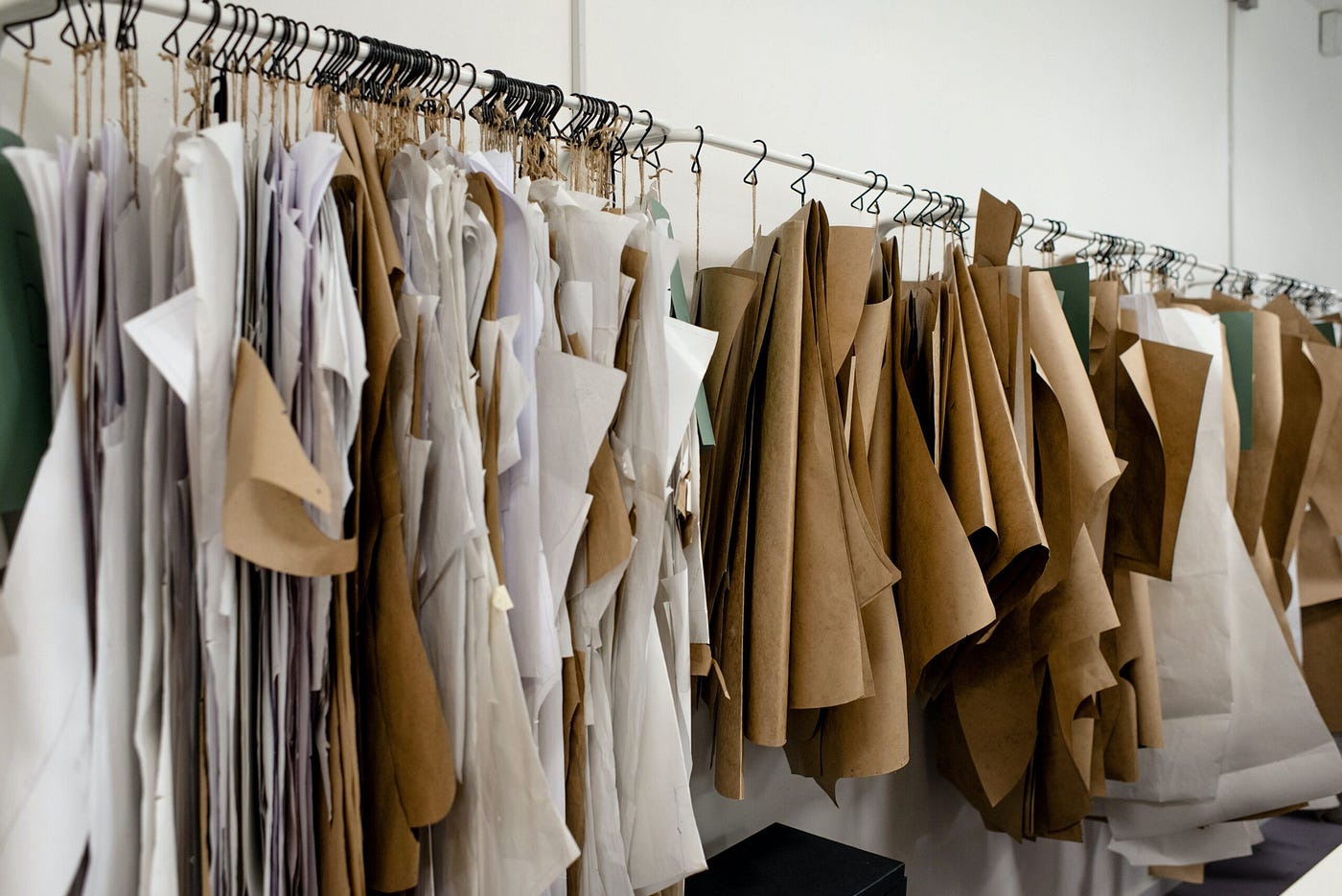Fabric care knowledge is essential for ensuring quality cleaning and maintaining the longevity of your clothes. Understanding the properties and needs of different fabrics allows you to treat each garment with the appropriate care, avoiding damage and preserving its appearance and functionality. This article explores the importance of fabric care knowledge and offers practical tips for effective cleaning and maintenance.
Understanding Different Fabric Types
Each fabric type has unique characteristics and requires specific care. Here’s an overview of common fabric types and their care requirements:
- Cotton: Cotton is a natural, breathable fabric that is relatively easy to care for. It can be machine-washed and dried, but high temperatures can cause shrinkage and color fading. Use mild detergents and avoid over-drying.
- Wool: Wool is a natural fiber known for its warmth and softness. It should be hand-washed or dry-cleaned to prevent shrinkage and damage. Use cool water and a gentle detergent specifically formulated for wool.
- Silk: Silk is a delicate, luxurious fabric that requires gentle handling. Dry cleaning Tarrytown is often the best option, but if hand washing, use cold water and a mild detergent. Avoid wringing or twisting the fabric.
- Linen: Linen is a lightweight, breathable fabric that wrinkles easily. Hand washing or machine washing on a gentle cycle is recommended. Iron while damp to achieve a crisp finish.
- Synthetic Fabrics (Polyester, Nylon, Acrylic): These fabrics are durable and generally easy to care for. Machine wash in cold or warm water and tumble dry on low heat. Avoid high temperatures to prevent melting or damage.
- Blended Fabrics: Blended fabrics combine different fibers to enhance durability, stretch, or other properties. Follow the care instructions on the label, as the blend can affect how the fabric should be treated.
Understanding these fabric properties helps in determining the best cleaning and maintenance methods for each garment.
The Role of Fabric Care Labels
Fabric care labels provide essential information about how to clean and care for your garments. These labels include symbols and instructions that guide you on washing, drying, ironing, and other care practices. Here’s a breakdown of common care symbols:
- Washing: Symbols indicating washing methods include a tub with water for machine washing, a hand for hand washing, and an X over these symbols indicating do not wash.
- Bleaching: A triangle indicates bleach usage. An empty triangle means any bleach is safe, while a filled triangle with diagonal lines means use non-chlorine bleach only. An X over the triangle means no bleach.
- Drying: A square with a circle inside represents tumble drying. Dots inside the circle indicate the heat setting (one dot for low, two for medium, three for high). An X over the symbol means do not tumble dry.
- Ironing: An iron symbol indicates ironing is safe. Dots inside the iron show the recommended heat setting (one dot for low, two for medium, three for high). An X over the iron means do not iron.
- Dry Cleaning: A circle indicates dry cleaning is recommended. Letters inside the circle specify the type of solvent to be used (P for perchloroethylene, F for hydrocarbons). An X over the circle means do not dry clean.
Following these symbols ensures that you are using the correct methods to care for your fabrics, reducing the risk of damage.
Effective Stain Removal
Stain removal is a critical aspect of fabric care knowledge. Different types of stains require different treatments, and addressing them promptly can prevent permanent damage. Here are some common stains and how to treat them:
- Oil-Based Stains: Treat oil-based stains like grease and makeup with dishwashing liquid or a specialized stain remover. Apply directly to the stain, let it sit for a few minutes, then wash in warm water.
- Protein-Based Stains: Blood, sweat, and food stains should be rinsed with cold water immediately. Apply an enzyme-based detergent or stain remover, soak in cold water, then wash.
- Tannin Stains: Coffee, tea, wine, and fruit juice stains can be blotted with a clean cloth, then treated with a mixture of vinegar and water or a tannin stain remover. Wash in warm water.
- Ink Stains: Apply rubbing alcohol or a commercial ink remover to ink stains. Blot gently with a clean cloth until the ink lifts, then wash as usual.
- Grass Stains: Use a mixture of vinegar and water or a paste made from baking soda and water on grass stains. Apply to the stain, let it sit, then wash.
Knowing how to treat different stains effectively ensures that your garments remain clean and presentable.
Proper Washing Techniques
Proper washing techniques are essential for maintaining the quality of your clothes. Here are some tips for effective washing:
- Sort by Color and Fabric Type: Separate clothes by color (whites, darks, and colors) and fabric type (delicates, heavy fabrics) to prevent color bleeding and fabric damage.
- Use the Right Detergent: Choose a detergent suitable for the fabric type. For delicate fabrics, use mild or specialized detergents. For heavily soiled clothes, use a stronger detergent.
- Follow Care Labels: Always follow the care instructions on the garment’s label. This includes the recommended water temperature, washing method, and any specific care requirements.
- Avoid Overloading the Machine: Overloading the washing machine can cause clothes to rub against each other, leading to wear and tear. Wash smaller loads for better results.
- Use Cold Water When Possible: Cold water is gentler on fabrics and helps prevent color fading and shrinking. Use cold water for washing delicates and dark colors.
Proper Drying Techniques
Drying is another critical aspect of fabric care. Improper drying can cause shrinkage, fabric damage, and wrinkles. Here are some tips for proper drying:
- Air Dry Delicate Fabrics: Air drying is gentler on delicate fabrics like silk and wool. Lay the garments flat on a clean, dry surface or hang them to dry.
- Use the Appropriate Heat Setting: When using a dryer, choose the appropriate heat setting for the fabric type. Use low heat for delicate fabrics and higher heat for durable fabrics.
- Avoid Over-Drying: Over-drying can cause shrinkage and damage to fabrics. Remove clothes from the dryer while they are still slightly damp and let them air dry completely.
- Use Dryer Balls: Dryer balls help reduce drying time and prevent clothes from clumping together. They also help soften fabrics and reduce static.
- Shake Out Clothes: Shake out clothes before drying to reduce wrinkles and help them dry evenly.
Proper Storage Techniques
Proper storage is essential for preserving the quality and appearance of your clothes. Here are some tips for storing different types of garments:
- Hang Garments Properly: Use sturdy hangers for suits, coats, and dresses. Avoid wire hangers, which can distort the shape of the clothes. Wooden or padded hangers are ideal.
- Fold Knitwear and Heavy Garments: Heavy sweaters, knitwear, and delicate fabrics should be folded rather than hung to prevent stretching and distortion. Store these items in a cool, dry place.
- Seasonal Storage: For out-of-season clothes, use breathable garment bags or storage bins. Avoid plastic bags, which can trap moisture and lead to mold or mildew. Store these items in a cool, dry area.
- Use Cedar and Lavender: Cedar blocks, lavender sachets, and mothballs can help repel moths and other insects. Place them in your closet and storage areas to protect your clothes.
Regular Maintenance and Repairs
Regular maintenance and prompt repairs can prevent small issues from becoming major problems. Here are some maintenance tips:
- Sew Loose Buttons and Hems: Use a needle and thread to reattach loose buttons and repair fallen hems. Match the thread color to the fabric for a seamless look.
- Fix Small Holes and Tears: Small holes and tears can be repaired with fabric glue, iron-on patches, or by sewing. For larger tears, consider taking the garment to a professional tailor.
- Remove Pilling: Use a fabric shaver or a pill remover to gently remove pilling from knitwear and other fabrics. Pilling can make clothes look worn and reduce their overall appearance.
- Check Zippers and Fasteners: Ensure zippers and other fasteners are in good working condition. Repair or replace any that are damaged to maintain the functionality and appearance of your garments.
Environmental Impact and Sustainability
Understanding fabric care also involves considering the environmental impact of your cleaning practices. Here are some tips for more sustainable fabric care:
- Use Eco-Friendly Detergents: Choose biodegradable and non-toxic detergents that are less harmful to the environment.
- Wash Less Frequently: Over-washing can wear out clothes and consume more water and energy. Only wash clothes when necessary and use spot cleaning and airing out to refresh garments between washes.
- Choose Energy-Efficient Appliances: Use washing machines and dryers that are energy-efficient and have high-efficiency ratings to reduce water and energy consumption.
- Air Dry When Possible: Air drying is gentler on fabrics and reduces energy usage. Use clotheslines or drying racks for air drying.
- Repair and Upcycle: Repair clothes instead of discarding them and consider upcycling old garments into new items. This reduces waste and extends the life of your clothes.
Conclusion
Fabric care knowledge is essential for ensuring quality cleaning and maintaining the longevity of your clothes. By understanding the properties and care requirements of different fabrics, you can treat each garment appropriately, avoiding damage and preserving its appearance and functionality.
Effective stain removal, proper washing and drying techniques, and regular maintenance and repairs are crucial aspects of fabric care. Additionally, considering the environmental impact of your cleaning practices and adopting sustainable methods can contribute to a more eco-friendly lifestyle.
Incorporating these fabric care tips into your routine not only extends the life of your garments but also helps you maintain a polished and well-kept wardrobe. By taking care of your clothes, you invest in your personal style and contribute to a more sustainable approach to fashion.
With the right knowledge and a little extra effort, you can ensure that your clothes remain in excellent condition, enhancing your overall appearance and confidence. Quality fabric care is an investment in yourself and your wardrobe, providing long-lasting benefits and satisfaction.










